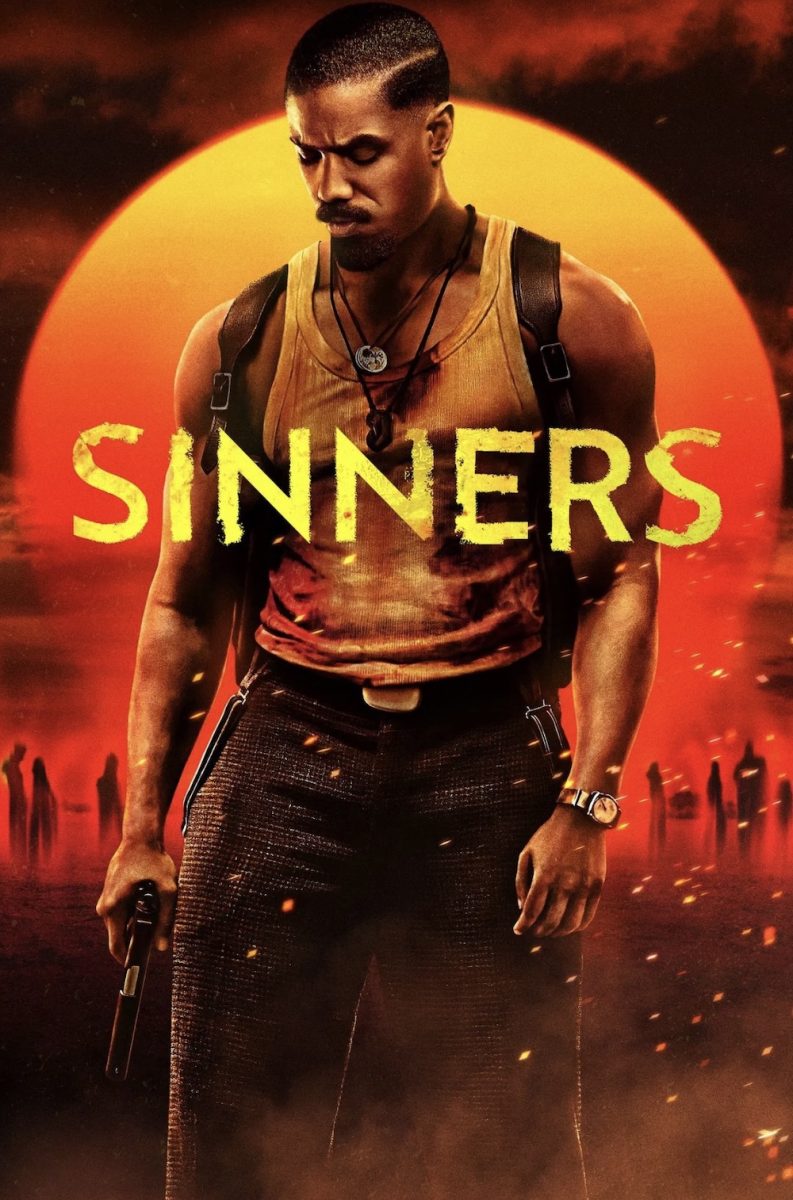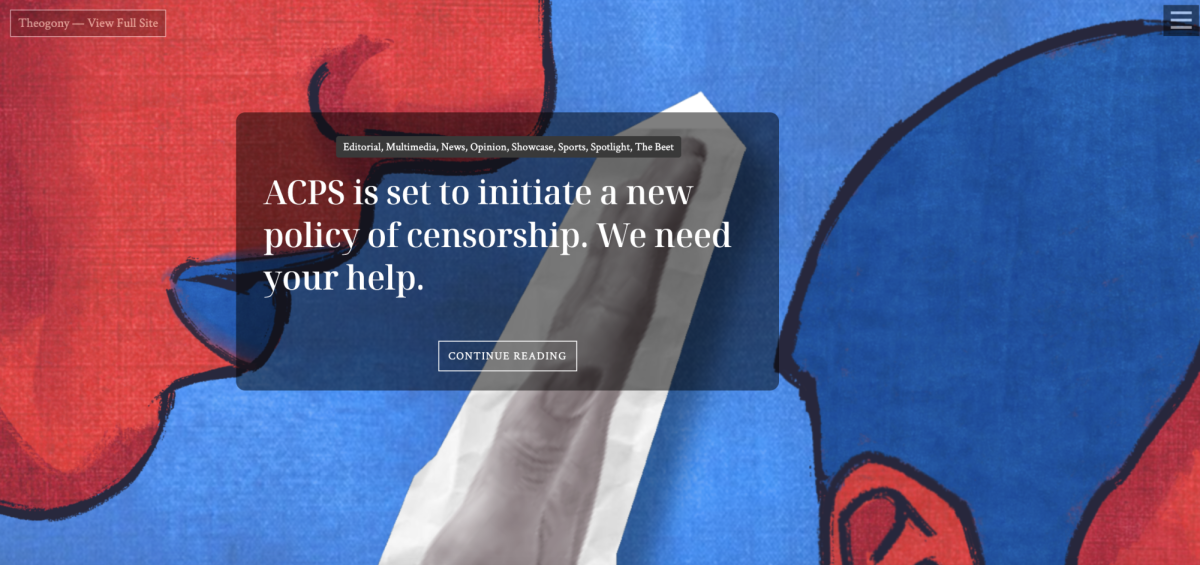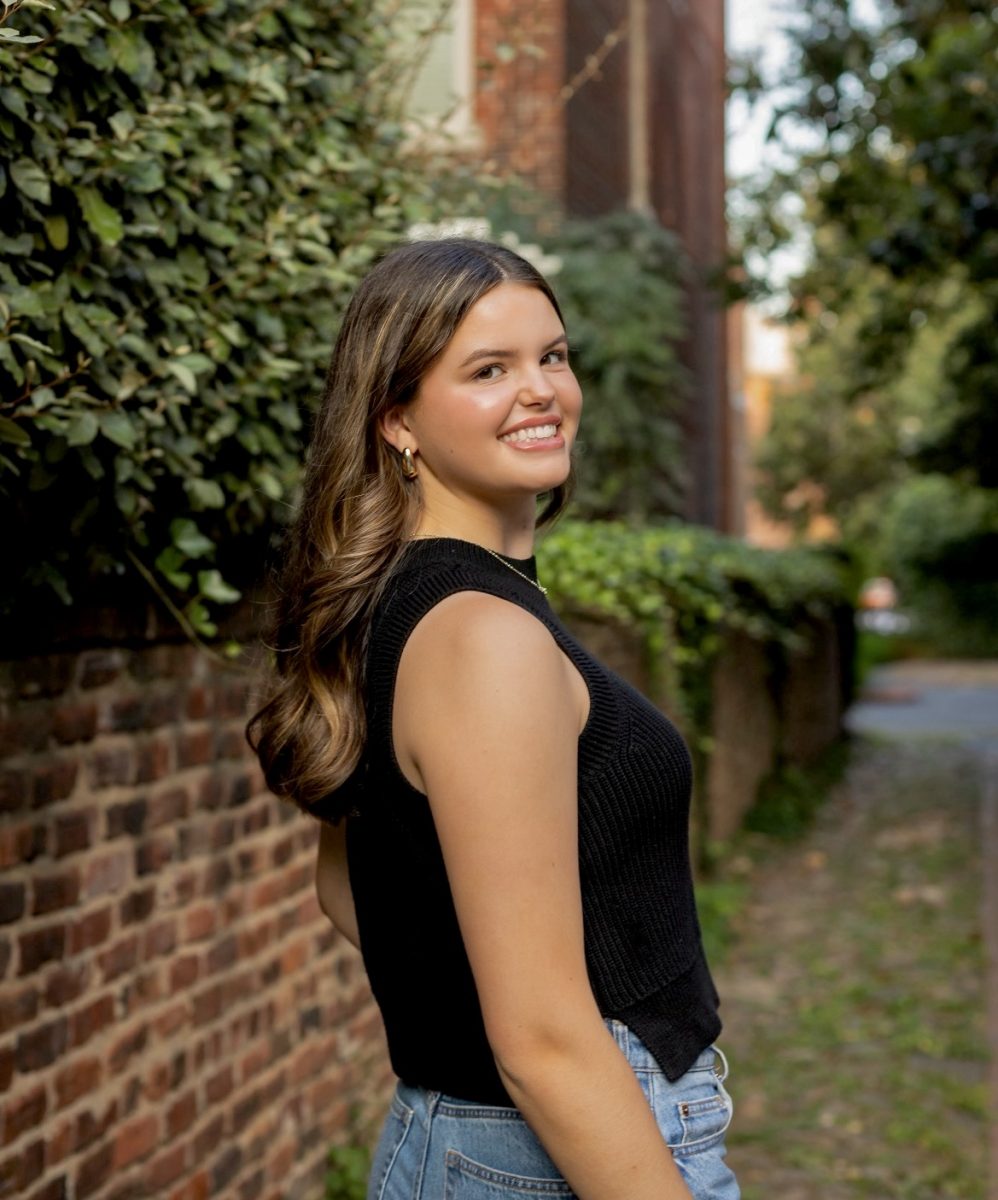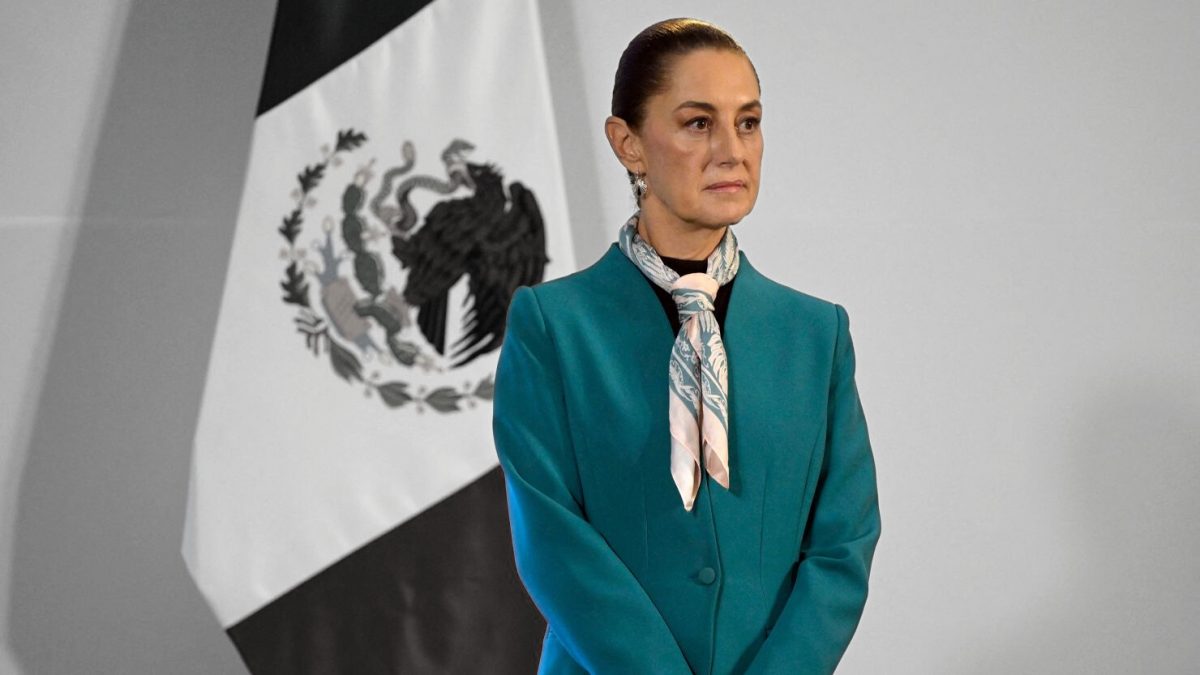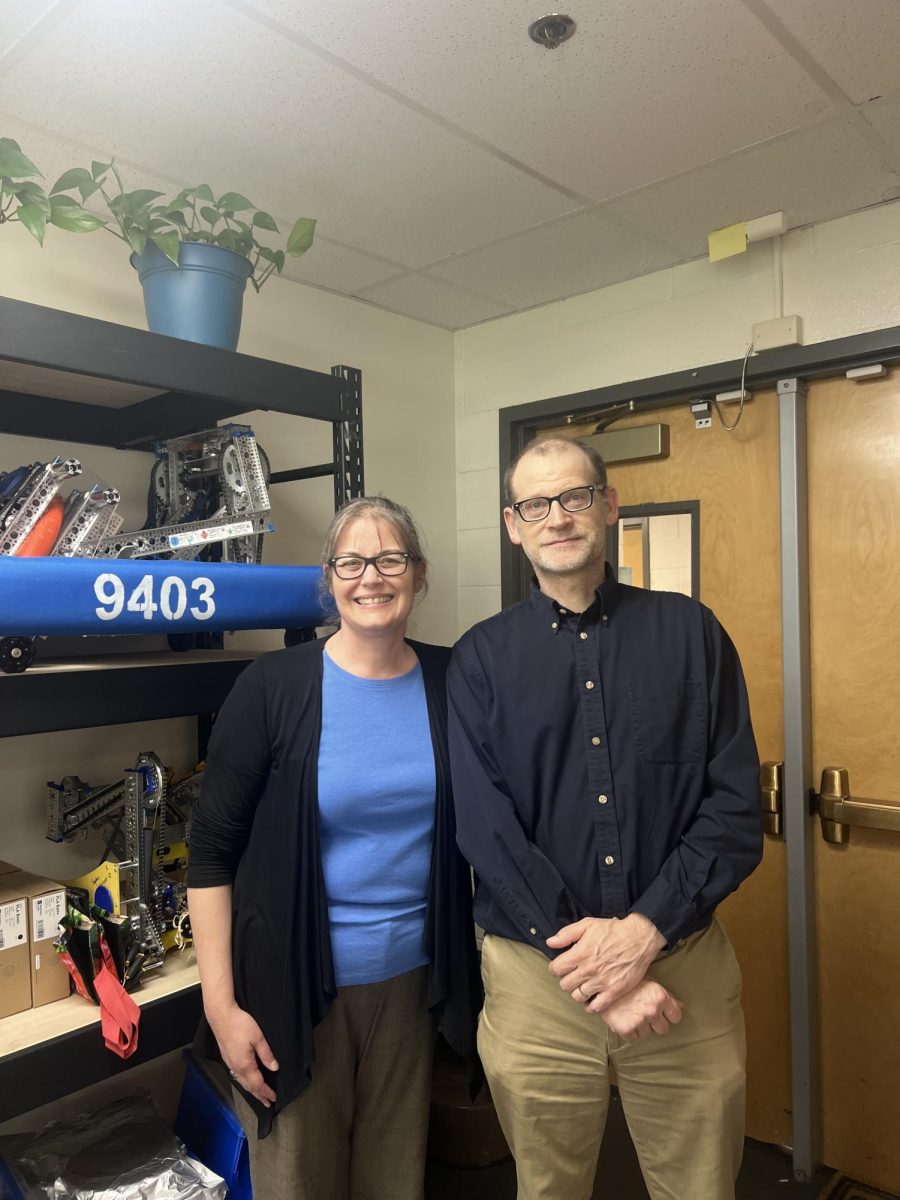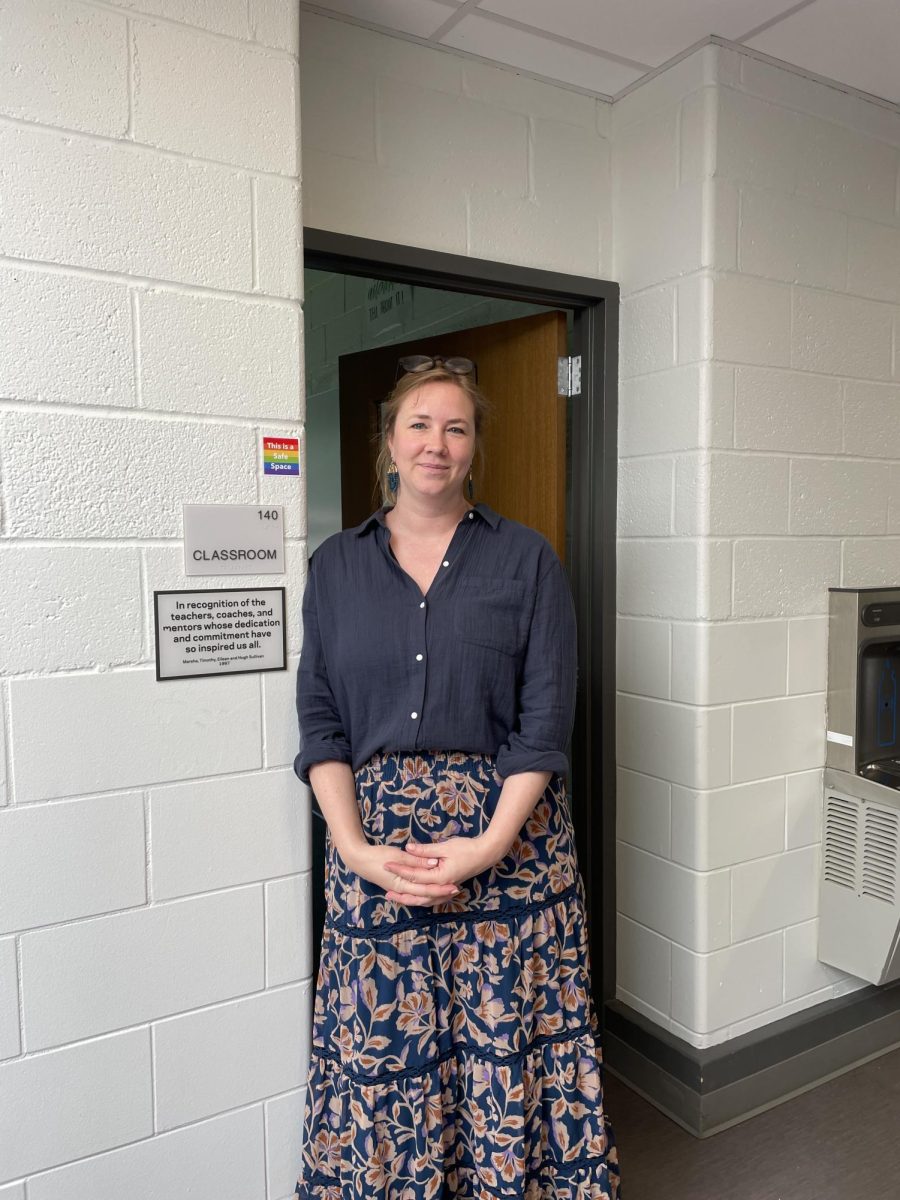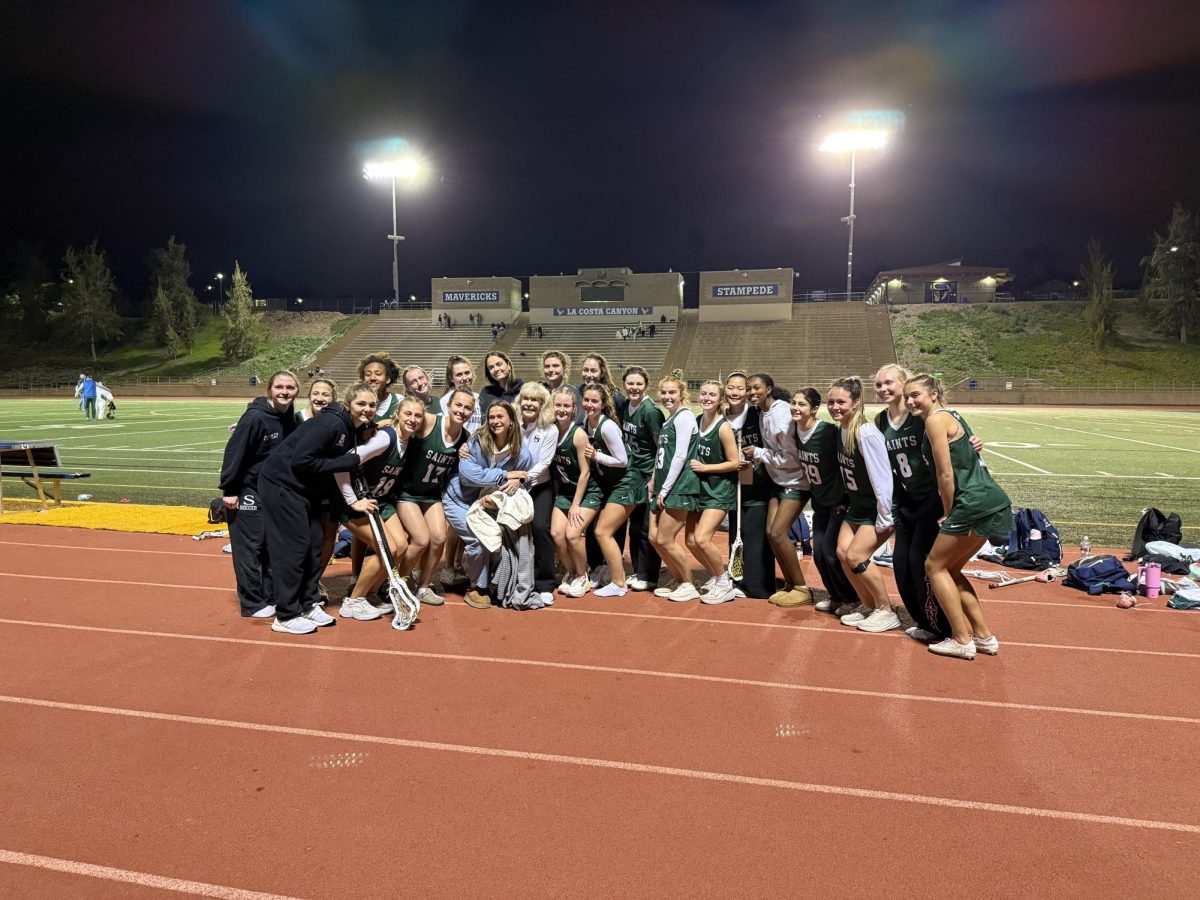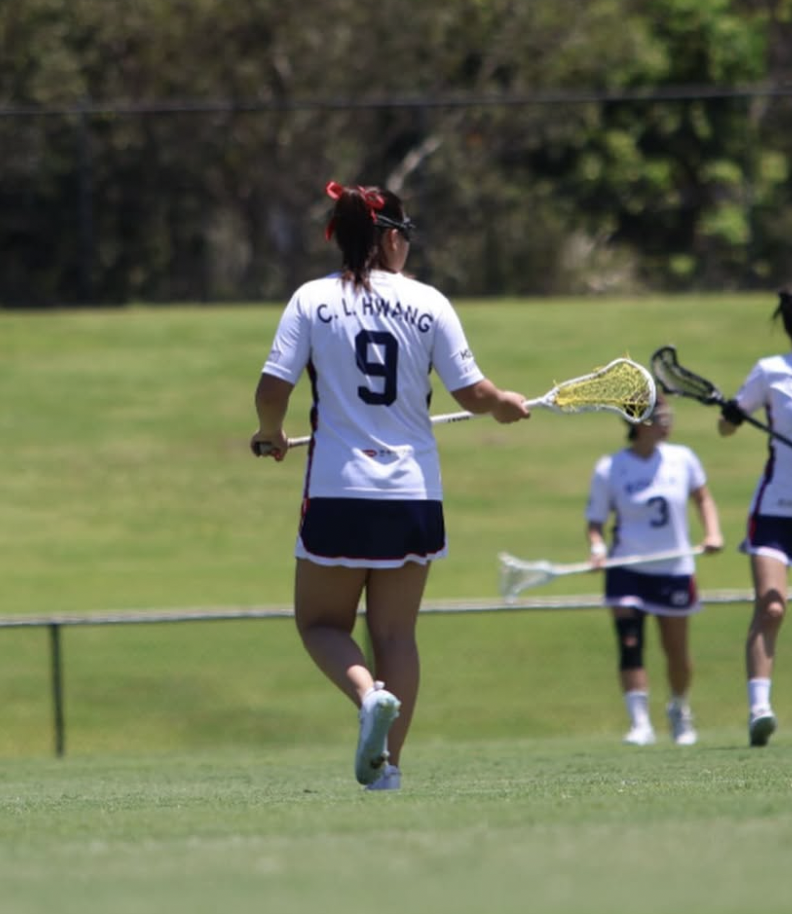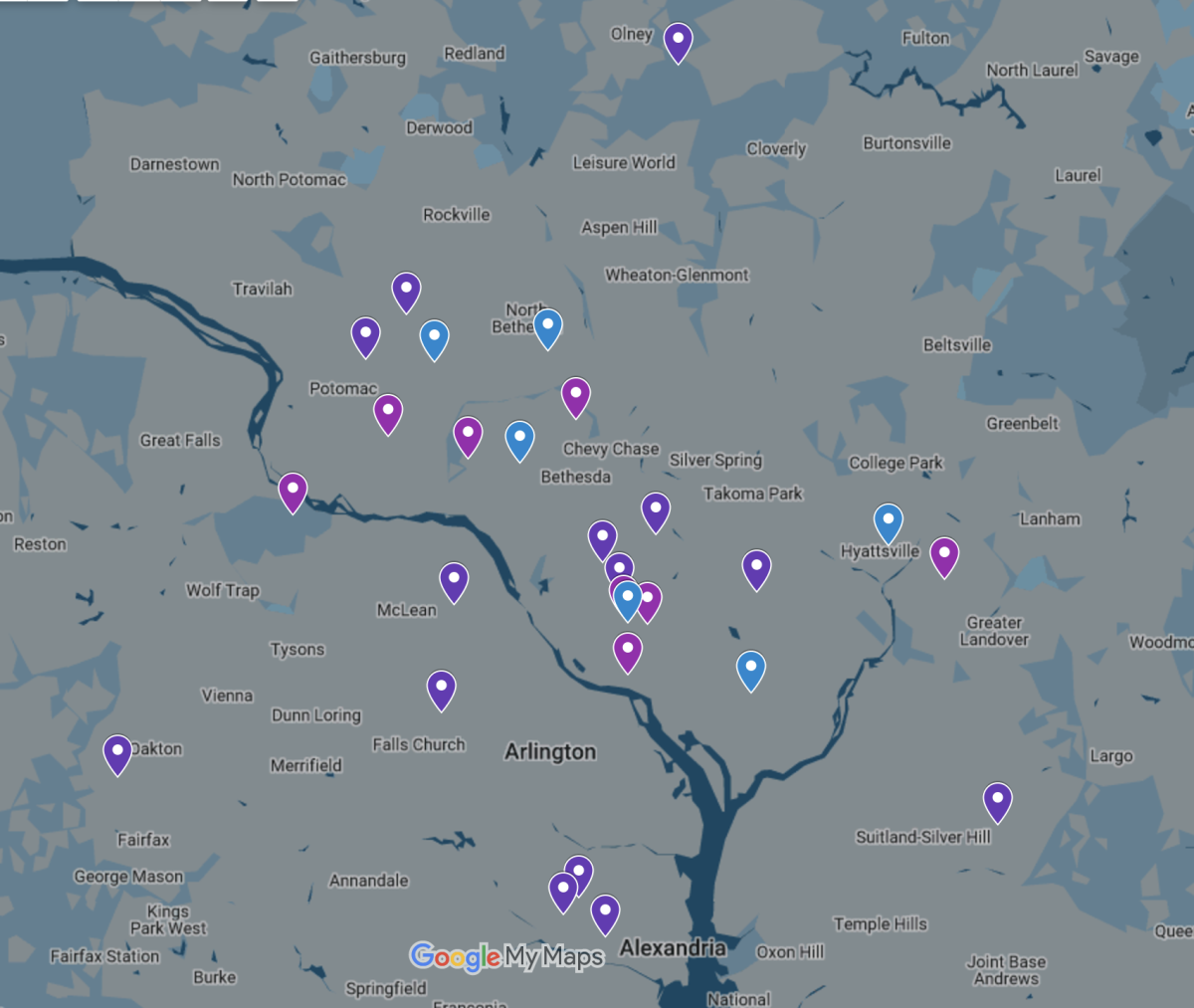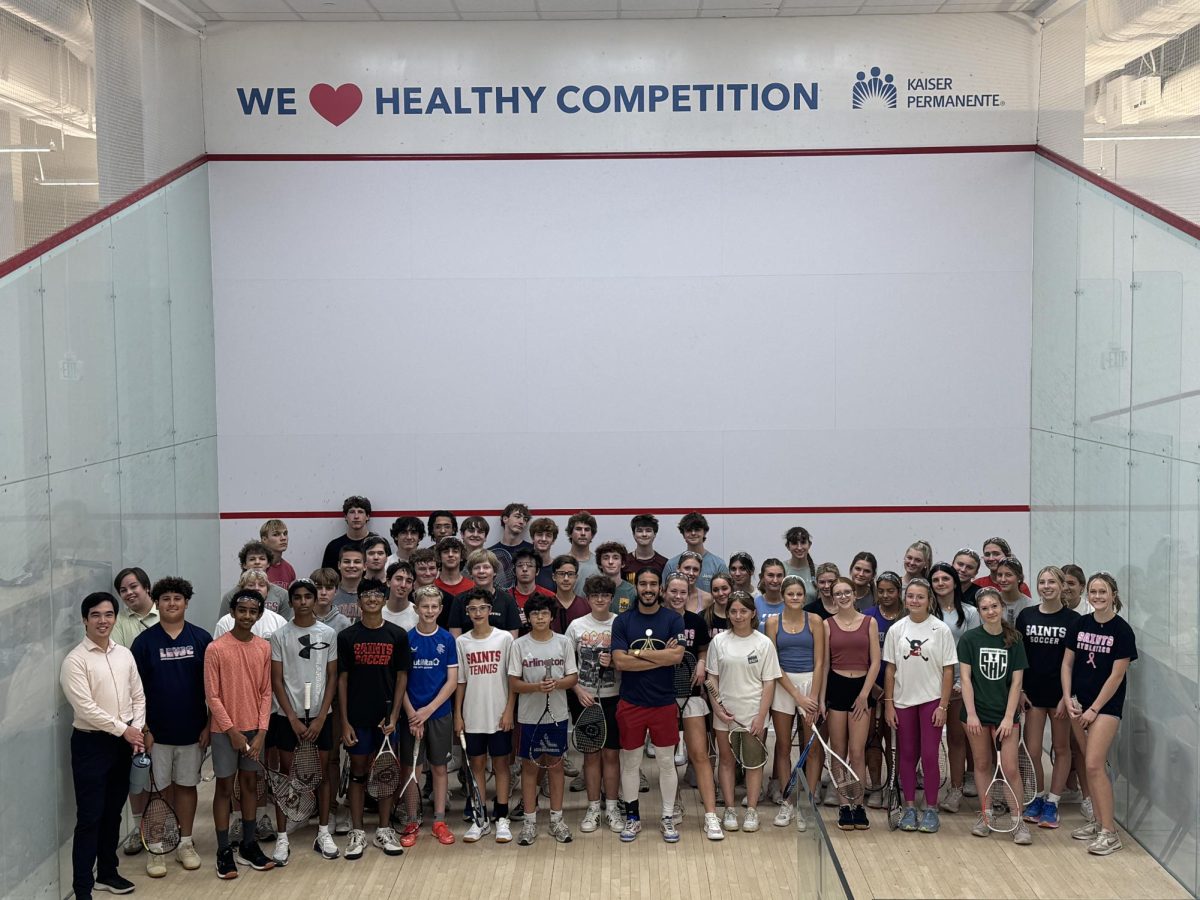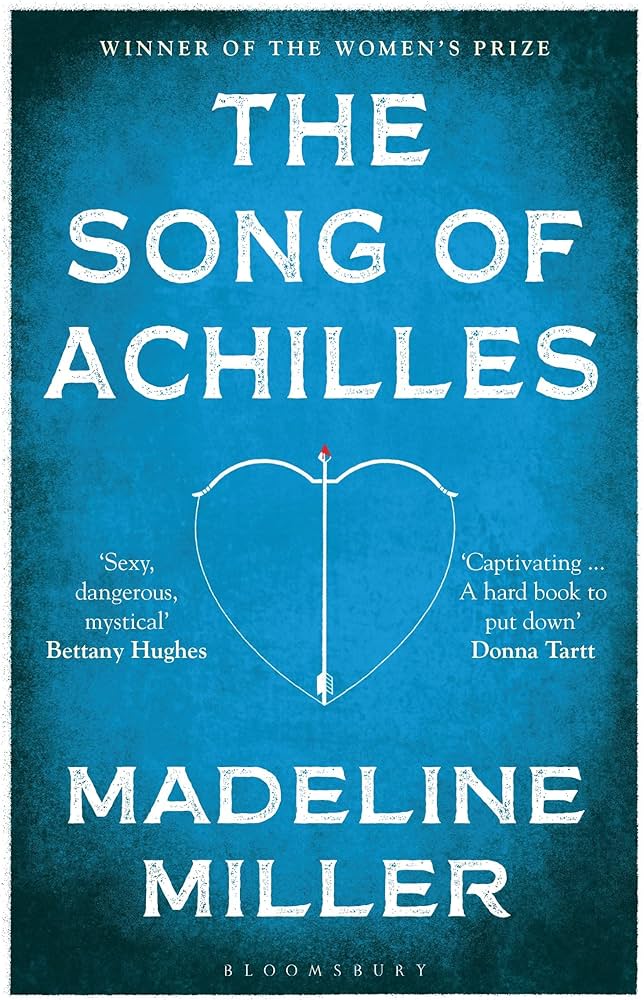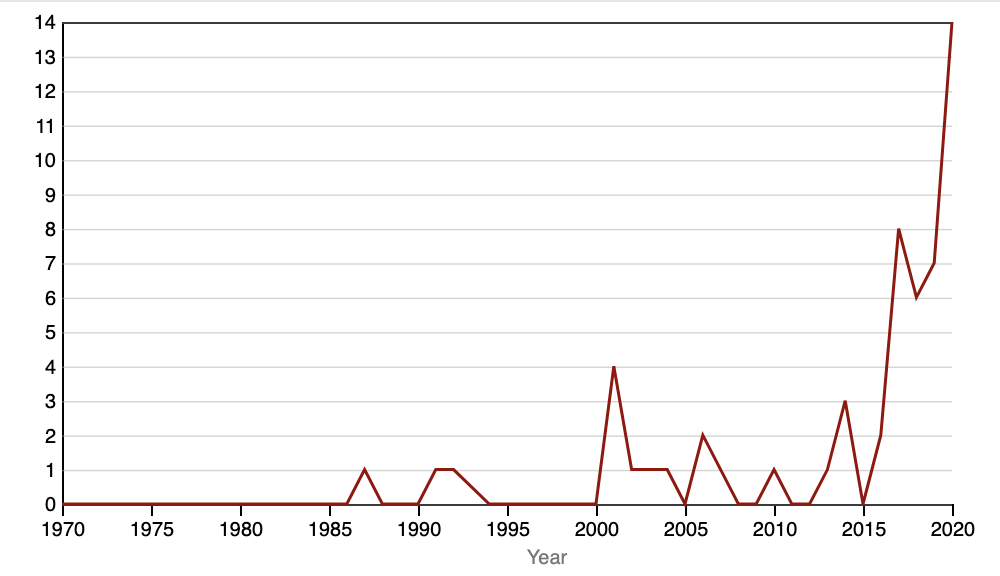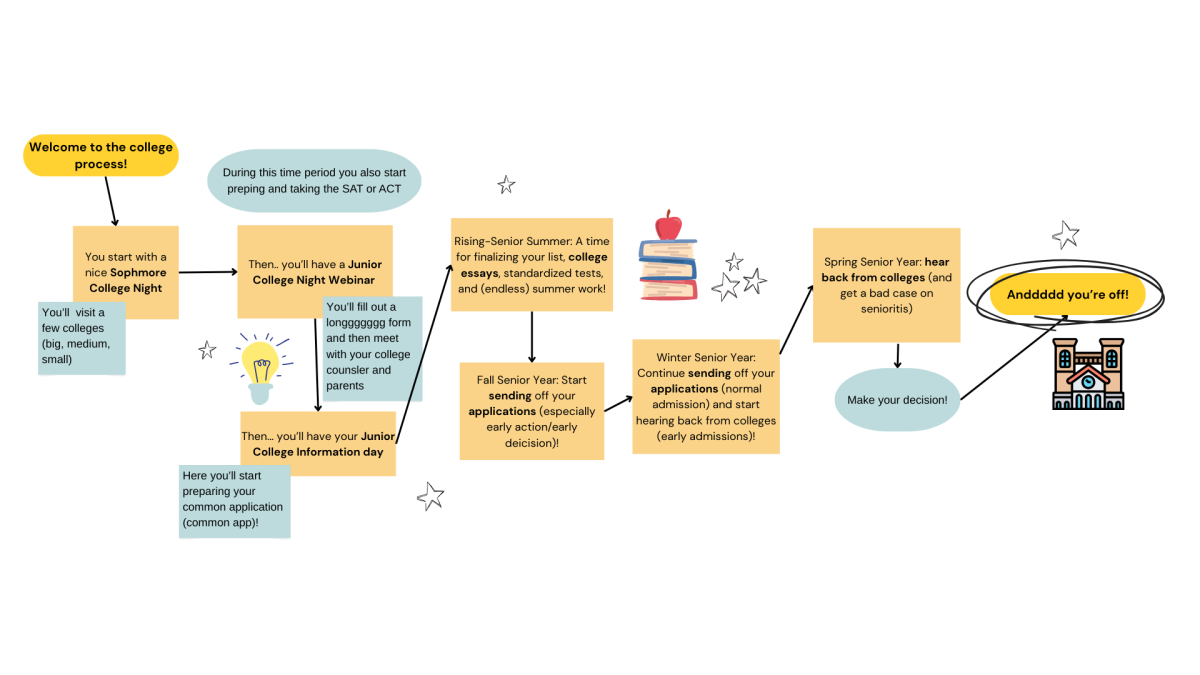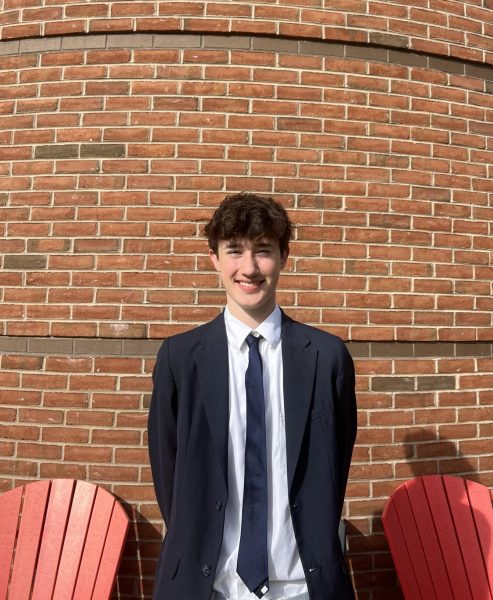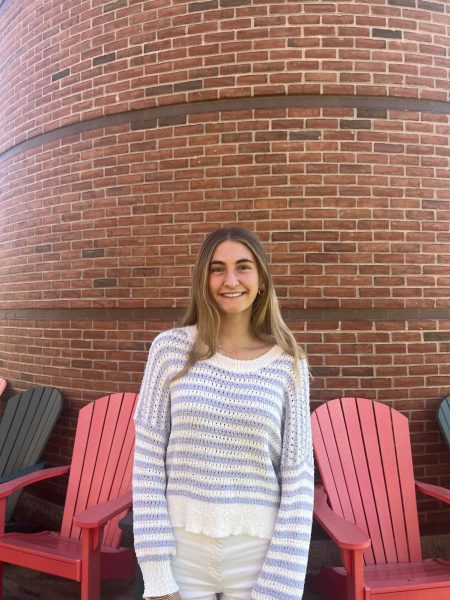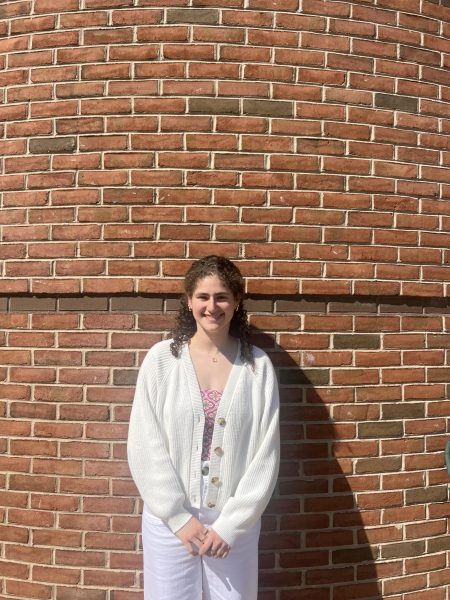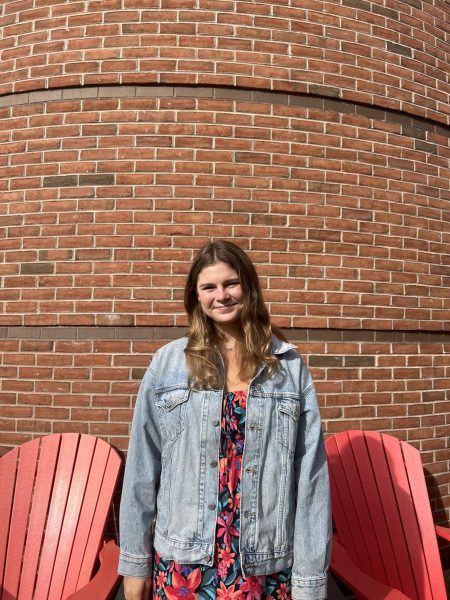Demystifying the College Process: From Sophomore Year to Senior Year
St. Stephen’s and St. Agnes Upper School is a high school, but also a college preparatory school, meaning that one of its functions is to prepare students for and help students get into college.
In this article, the junior staff writers will walk you through one of the most exciting and stressful experiences of your time in high school: the college process.
Starting in the fall of the sophomore year, students and their families are invited to a college night hosted by the college counselors in CPAC. The presentation covers everything from test taking and touring schools, to a loose timeline of formulating a list and applying to schools before senior year. It’s a helpful time for students and their families to get a glimpse of the upcoming school year and prepare before the official process begins.
College representatives from schools across the country come to the CPAC and explain what they look for in applicants. After this, small groups of students and parents are split into groups to go through different profiles, emphasizing how different decisions that you make in your sophomore, junior, and senior years can impact you in the college process later on.
Sophomore Mia Klock found this event useful, noting, “I feel a lot more prepared after college night because I feel like I know what I need both academic and extracurricular wise and how to balance that.”
From college night onwards, students are encouraged to visit a variety of schools. Sophomores are recommended to start by visiting a diverse range–big, small, urban, and rural–so by mid junior year, students can narrow down their lists. College tours are a key part of the high school college process, giving students a firsthand look at campuses and helping inform important decisions about their future. We sent out a survey to the class of 2026 at SSSAS and asked them about their experiences with touring different campuses and the Junior College Day.
According to the fifteen junior responders, around 50% of juniors said that college tours were both exciting and stressful. This makes sense, as it can feel very overwhelming when tour guides spew heaps of information all at once. For the 60% of the juniors who have visited more than six schools, it can be hard to differentiate information from different universities, especially if you visit multiple colleges within a short period.
One thing that 90% of juniors can agree on is that tours are both informative and boring. While it is important to soak in as much information as possible, since it may be their only visit, many students found that tour guides are extremely biased and tend only to show the university in a positive light. Additionally, when you visit several colleges that are similar in size, location, or campus culture, the tours can start to blur together, with many of the details from the tour guides feeling repetitive. Interestingly, despite the travel involved, just over half of the juniors who responded to the form reported that they did not have to miss a single class, suggesting that they could fit the tours into their schedule without any major disruptions, which is especially impressive during the busy junior year.
One junior, Georgia Neaderland, mentioned how these tours can “be overwhelming because a lot of schools can be very similar, but you discover what makes the schools unique when talking to former or current students.”
Another student, senior MacPhearson Strassberg, said that you can also “Really get a vibe from a campus on a tour,” which can help inform your decision when you are applying to colleges later.
Mr. Tim Doyle, one of the college counselors, also commented on the importance of college tours in an interview with The Voice–when asked what the most overlooked aspect of the college process was, he said, “College visits. I don’t think you guys visit enough.”
After filling out a long form on Scoir (asking questions from what is your greatest strength to what fictional character you want to be your college roommate), juniors are invited to a second college night that gives a general overview of the college application process. This meeting covers all of the general information so that individual college meetings later that winter can be shorter.
Throughout this time, you will also end up having Junior College Day. On Junior College Day, the whole junior class meets with the college office to prepare for senior year. They help all the juniors set up their Common Application (Common App) account and better understand the steps they should be taking throughout the next six months. In years past, they have also brought in college representatives, but this year they did not.
While reflecting on Junior College Day, junior Ally Kleeblatt said, “I think I did learn a lot,” adding that while “it was a lot of information thrown at you, the college day helps you plan out going into the summer.”
Also on Junior College Day, the college office also instructs each class about the larger Common App essay. During this day, juniors are given the space to reflect and brainstorm ideas for their essays and are also instructed to have ideas brainstormed for the main essay by the end of May, as well as have a “meaty” draft done by the end of June. If you are applying through the Common Application (Common App), there is one main essay that is sent to every college that you apply to, and for each college, there are smaller essays (supplementals). The college office stressed that the essay is pretty much the only variable that you have complete control over, adding to the pressure of this essay.
The purpose of the college essay is to give colleges context for you as a person and fill in the gaps that the rest of your application leaves. Things like grades, test scores, and letters of recommendation might not fully capture you as a person. With that said, your topic must also be unique and stand out in its own way. Mr. Doyle gave examples of a chapstick companion and a unique hobby, overall citing their memorability. The rising juniors were also instructed to stay away from three very common topics: the death of a loved one, divorce, and community service.
On the form The Voice sent out, most juniors (56%) found the advice for writing the essay to be helpful, with 24% saying that it didn’t hurt but didn’t help, and 20% saying that it wasn’t super helpful. Forty-five percent of juniors found that the brainstorming session was the most useful, and 40% found that the information on what colleges were looking for was the most helpful.
Junior, Georgia Neaderland said how she appreciates, “the multifaceted approach to discovering what we will write our essays about, because we are all individuals and all our essays will be unique.”
Another key component of the college process is taking the SAT and ACT. Both are standardized tests that give colleges more context for each student’s and each school’s academics. It is important to note, however, that these tests are part of a bigger picture, and with many schools staying test-optional (80% as of the 2024-2025 admissions season), their importance is still debated. Nonetheless, your college counselor will recommend that you take the test, just to keep it as an option.
There is not much difference between the SAT and ACT. In the past year, both have been adapted to online formats. However, the SAT has a shorter testing window (2 hours and 15 minutes compared to the ACT’s 2 hours and 55 minutes), and the ACT covers more subjects (English, Math, Reading, and Science compared to Math and Verbal for the SAT). Both can play to different people’s strengths and weaknesses, and they are just one point that colleges look at for college admissions.
A large part of taking the SAT or ACT is preparing for it. Many juniors and seniors work with tutors to learn strategies and concepts that are on the test. Ally Kleeblatt added that “I think preparing early is the most important thing you can do.” Saying that she aims to be done with testing before senior year because she wants “to get as much done beforehand.”
What makes one college more desirable than the other? Do SSSAS students care more about location or academic program options? The selection process can be intimidating to some, but for a majority of students, choosing where they want to go is the fun part of the college process. The first step of choosing a college is picking a location. Out of the seniors we surveyed, 16% of the 56 schools applied to were in-state schools. More than half were East Coast, with only a select few applying to schools out West.
At the start of their sophomore year, every student is introduced to the website Scoir. SSSAS partners with the website to help students build their initial list of colleges, research acceptance rates, and other important information. At the start of junior year, students yet again sign up for a new website, College Kickstart. Requiring a minimum input of 10 colleges, Kickstart takes a student’s weighted GPA, SAT scores, and other factors to determine the statistical likelihood of a student being accepted into a college. Generally, to make a good list, students will want to put 3 reaches, 4 likelys, and 3 safeties to get the best results. If a student chooses too many unlikely colleges, Kickstart will let them know and give them the harsh truth.
We sent out a form to the senior class and asked them what the most important factors were for their college decisions, and got 25 responses. Academics were the leading factor for seniors, as 56% of seniors indicated this to be the main reason for attending a University. Prestige, location, and culture were also important factors in this decision. Interestingly, only one person chose Greek Life as a major factor in their decision.
When MacPhearson was asked about what factors he considered when choosing colleges, he said, “I think the trinity for me was academics, environment, and culture.” He, and many other seniors, find information about the factors that they care about through “Reading a lot of admission things on their website, if they visited our schools, going to those tours, and talking to current students after tours.”
Junior Ally also said that programs that certain schools have can inform what you add to your list, saying, “I really want to major in interior design, and that’s not something that you find at every school.”
The next step of the process is to start applying to colleges. There are typically two waves for the admissions process: early action/early decision and regular. In the early action (EA) or early decision (ED), you apply to the college or university usually by November 1st, versus the January deadline for regular decision. The ED/EA applicants also hear back around December or early January, which is at least three months before regular admission is released. If you apply EA, which not all schools have the option to do, you are not bound to attend the school the next fall. There are some exceptions to this rule, though, and some selective institutions such as Princeton University, Harvard University, Boston College, and Georgetown University, instead of early action, have restrictive early action. Restrictive early action is when you EA to the school and you hear back early, but you commit to going to the school unless you get into a public university (such as UVA, Ohio State, William and Mary, etc). There are many differences in restrictive early action at different schools, so this will differ from school to school. For ED, if you apply ED and get into the school, you are required to go there the following fall and must drop all other applications. Some schools, once again, have variations on these requirements, so it is important to check all the specifics. However, EA and ED both allow you to have the possibility of being done with the college process over the winter rather than waiting until the spring. EA and ED also allow showing interest in a school, which some schools track.
Many, but not all, schools care about demonstrated interest. Demonstrated interest is when students interact with the college to show their interest. This signals to colleges that if you are seriously interested in attending their college, it helps your chances of coming in. If you EA or ED, you show colleges your ultimate interest. You are effectively telling them that they are your top choice and therefore should be considered.
MacPhearson added that, “I think that they are really good tools. I think ED, if the college is your #1 choice, is the way to go if the finances work out,” and that EA is a “great tool, just to get decisions back earlier.”
The next wave of applications involves regular decisions. These are non-binding, meaning that you can change your mind until you accept admission, and you can apply to as many colleges as you want.
The strategy for deciding where to apply and when differs for every student. There is a typical pattern that students follow, though. If there is a “reach” school, where you aren’t entirely sure if you will get in or not, you can EA or ED there to show your interest in going. If you get in, then you are done with the process, but if you do not, then you have to continue your application process. Then, you apply to colleges that are in your “foundation,” “target,” and “reach,” with a good balance of all of them. Kickstart, the app previously mentioned, will look at the list of schools that you are looking to apply to and “grade” them. You can get scores from A+ to F, and that ensures that, based on what information the system has about you, you have a balanced list of schools that you apply to.
MacPhearson Strassberg also added that the “College process requires strategy” and that “timing is everything.”
One of the final steps of the college process is hearing back from colleges. When hearing back from these colleges, there is a lot that goes into making a final decision. Factors such as distance, cost, academic reputation, and social life all play a large role in making the decision. For the class of 2025, as of April 19th, just over half of the class of 2025 is going to Southern colleges, with 32% going North, 11% going to the Midwest, and 4% going to the West. In the form that The Voice sent out to the senior class, 44% said that they wanted to go South, and 44% said that they wanted to go to the Northeast. When prompted to name what was important to them, 56% of the class of 2025 said that academics were important to them, with 20% saying academic reputation was important, with 20% saying location was an important deciding factor. Twenty-eight percent said campus and campus culture were also deciding factors for them. Sixteen percent said that school sports also mattered.
The other part of hearing back from colleges is the dreaded rejection letter. When applying early action or early decision, you will find out if you get accepted, deferred, or rejected. If you are deferred, the college moves your application to be considered with the regular application pool, and if you are rejected, you apply elsewhere. For regular applications (and deferred EA or ED applications), you hear back in late March and early April. For these applications, you are either accepted, deferred (waitlisted), or rejected. If accepted, you can decide among the colleges you get accepted into. If you are waitlisted, the college could let you in depending on how many of the people that they accept decline their spot at that college. Something that Mr. Doyle emphasized, though, with rejections is that “you are not being rejected, they are just denying you a place.” He also said, “It’s ok to be sad for a day or two and then you gotta move on.”
MacPhearson said when he was hearing back from colleges, “It’s one of those things you try to keep out of your mind until you go to the admission site,” adding that ”everyone has their own ways of dealing with the stress — some people talk about everything they do with their friends, some people are more private.” MacPhearson said that he, “tried to focus on my academics and things that I enjoyed until day of and that I’d pretend to forget about until I heard back,” most importantly saying “in retrospect I shouldn’t have been as stressed.”
An intimidating part of college applications is applying to schools with low acceptance rates. These schools require extensive extracurricular activities and stellar grades for you to be unique from any other candidate. Dimitri Criswell and Sandhya Augustine are two students whose characteristics set them apart from thousands of other applicants, and they are two of this year’s seniors who were both accepted to Ivy League schools. In the fall of 2025, Dimitri will attend Brown University, and Sandhya will major in computer science at Cornell.
Applying to Ivy League schools can lead to lots of stress and potential disappointment. Dimitri noted that he was rejected from Princeton, Harvard, Dartmouth, UPenn, Northwestern, and NYU. He, along with his college counselor, felt confident that he would get into UVA, so he was more ambitious with his applications. Even then, he was deferred from UVA early action, but accepted regular decision.
Both Dimitri and Sandhya said that, along with grades, consistent extracurriculars are what make your application stand out. Sandhya said that you should lean into a narrative of the type of student you are. For her, she leaned into being a woman in STEM. She focused on robotics, coding, but also being well-rounded. She also did theater and field hockey. This combination with stellar grades and a near-perfect SAT score set her up for success with early decision. Dimitri also listed an extensive list of extracurricular activities, like pit orchestra, squash, baseball, arts council, and buy by admissions ambassadors.
Even though you can have amazing grades, recommendations, and extracurriculars, this does not 100% secure your spot. Ivy League schools only accept a limited number of students every year, and acceptance is a toss-up, something potential applicants should keep in mind.
SSSAS usually sends a substantial number of students to the University of Virginia every year; however, there are currently only three students planning to attend in the fall. Several high school students in the area are experiencing deferrals and rejections this year from UVA.
Senior James London, who is attending UVA in the fall, talked about the statistics of this year’s applicant pool, stating, “It was a super competitive year of applications—64,500 people applied (8,000 more than last year). 47,000 people applied early decision/action this year with a combined early acceptance rate of ~17.1%, while regular decision had 17,500 applicants with an acceptance rate of 9.3%.”
Some of the seniors who are going to UVA in the fall– Claire Hanley, Anne Louden Kostel, and James London– shared that they felt cautiously optimistic about getting in, and all applied either Early Decision or Early Action.
Another process that many of our Saints go through, tangentially to the college process, is the college recruiting process.
In addition to the other elements of the college process, some athletes choose to go through the recruiting process as well. Depending on the sport and the person, the recruiting process can begin as early as sophomore year. Aspiring collegiate athletes can compare their times, performance, or statistics to college athletes from Division I, II, or III to see which division they are likely to fall into.
Senior Hayley Lookadoo signed with Christopher Newport University for track and field on April 17th. Hayley said she “wasn’t very serious” about track and field at the beginning of high school; however, “once I got to the end of my sophomore year, beginning of my junior year, I started to get more serious with it.” She said that she officially started the recruiting process, “around the beginning or middle of my junior year,” which is typically the timeline for a Division III athlete. Even though Hayley found the process rewarding, the recruiting process is difficult and long. When asked about the most stressful part of recruiting, Hayley responded that: “the most stressful part was probably keeping my times up, because that’s the whole thing about track and field.”
Junior Meg Adams also just recently announced her commitment to the University of Chicago to play DIII lacrosse on April 10th. Meg has been playing lacrosse since she was in kindergarten, and she’s been playing varsity lacrosse at SSSAS since her freshman year.
“I think I knew I was always going to play lacrosse in college,” Meg stated in an interview, “but my formal decision to play at the collegiate level was going into freshman year when I decided to stop playing club soccer so that I could focus on lacrosse more.”
Meg expressed that quitting soccer was tough on her because she loved the team and the sport, but in the end, she knew she had made the right decision to keep pursuing lacrosse more seriously.
One of the hardest parts of getting recruited to play lacrosse was all the time she had to dedicate not only to the sport but also to the recruiting process.
“I missed out on a lot of time with friends and academics.”
When going into the recruiting process, Meg focused a lot more on the academic strength of the school rather than how good the lacrosse program was. She also took into account location and how she would fit in with the student body when looking at schools. She also got so much support from her family, friends, and coaches during the process.
“Coach Jenkins especially was a big help, and she did so much for my process. She reached out to almost all of my schools and talked to the coaches for me to let me know if I should keep going to their camps or if they didn’t think I’d be a good fit. The school was also supportive if I had to miss school for camps and school tours.”
Altogether, the college process looks different from student to student, recruiting plays an important role for some.
After all of this, you are finally off! Seniors make their final decision by around May 1st of their senior year (so congrats to all the seniors!!). The college process is no easy ordeal, but it’s one every student will end up going through, whether through the traditional route, through recruiting, or any other way.
